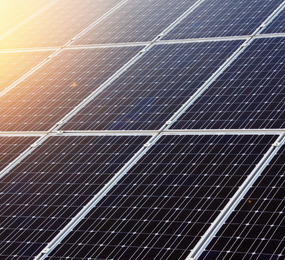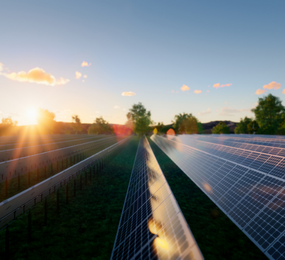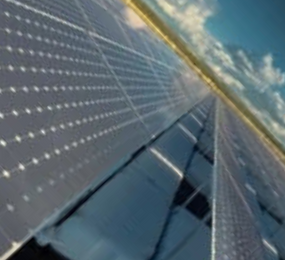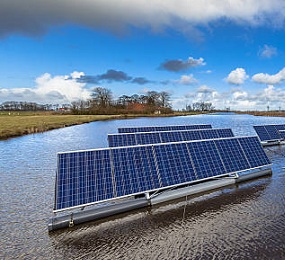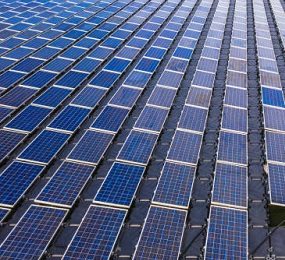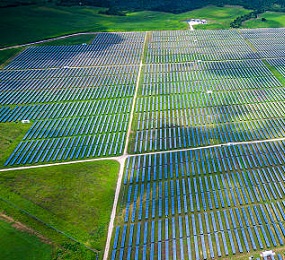Agrivoltaic systems simply mean combining agricultural activities with photovoltaic (PV) energy systems on the same landscape.
Due to the urgent need for a sustainable climate accompanied by new energy policies, the development of renewable energy is currently high in the EU and other industrial countries. However, there have been conflicts about land use for agriculture and energy production which will technically alleviate the need for APV implementations as the development of APV systems can be seen as the best way of utilizing the same landscape for both food and energy production.
The concept of APV was firstly introduced as far back as 1982 by Goetzberger and Zastrow of which in recent times, the APV system adoption has been largely practiced both in commercial large-scale and small research APV facilities across the globe by many countries such as Germany, the USA, China, Chile, France, Italy, Netherlands, Japan, South Korea, India, and Malaysia.
Do you know that PV systems trap or absorb more solar energy than photosynthesis?
Typically, PV solar panels are raised considerably high above cropland so that farming activities would be done underneath. Although the Agrivoltaic system is still in the emerging phase, it possesses much potential due to its benefits and possibilities regarding land usage and many others. Significantly, The agrivoltaic system's working factor totally depends on the environmental conditions of its geographic location. For instance, due to many synergistic effects on semi-arid or arid regions, the system possesses great potential majorly when applied within the region. So, before the application of any APV system, it is required to firstly test-run how the technology will perform in the said area so as to maximize all the socio-economic benefits that APV deployment promises.
Benefits of APV system Implementation
-
It has been demonstrated that APV encourages land productivity by being a resource-efficient and co-productive renewable energy system with minimized energy production cost, especially for regions with large populations or limited landscapes such as mountainous regions and islands.
-
Practising APV will significantly improve crop yields due to its shading effects which decrease the heat produced especially for hot regions as well as the water loss effect due to the cooling effect of the PV panels. Although this impact is being controlled by the area/environmental factor, it is still believed to work in most cases.
-
The energy transition due to climate change and global warming has been key drivers for APV system installation as it does not work as a typical ground base system but still enjoys the less production cost that land-based PV systems utilize and also maximizes its energy production benefits.
Although the APV system deployment has great benefits to offer, the level of development and implementation is poor. Could this be due to its associated issues? Let's check out some of the challenges stunting the growth of the APV industry practice.
Challenges of APV system deployment
Field Management: APV systems deployment has a considerable number of requirements needed for its operation one of which is the mounting structure design- the solar array must be adjusted according to the needs of the agricultural equipment/machines used. As mentioned earlier, the PV panels must be raised so as to accommodate the use of most agricultural equipment needed. At least, a distance of 4 - 5m between the PV panels and the land must be created.
Microclimatic alterations: This is said to be the most important issue accosted to crop production and agricultural practice underneath the solar array. Alterations of microclimate conditions have a negative impact on crop cultivation and yield generally. Air temperature, reduction of solar radiation, and others are some of the microclimate factors which have an adverse effect on the APV system setup causing fluctuations in general energy production.
Shading Effects: Excess shading effects affect the yield and quality of crops grown under the APV arrays. However, this feature mostly depends on the weather conditions of the area used and the technical arrangement of the APV system which involves the angle arrangement, orientation, size of the panels as well as the distance between them. More so, studies have demonstrated that the APV system can increase the agriculture income by more than 30% if suitable crops are selected to navigate the shading effect-induced yield loss. Notably, the shading effect varies due to the arrangement of PV modules depending on the solar altitude.
Outlook and future application opportunities
APV systems are still at the early stage of development and thus require technological innovations so as to reduce or even mitigate their practice challenges thereby improving the overall performance of the system. Since the APV system proposal in 1982 which is more than three decades old, the APV deployment is still at the minimum. The practice was readopted from recent garnering projects and pilot plants worldwide.
Recently, several technical innovations have been witnessed in the PV system which includes optimization of any available incident radiation through controlled tracking of the dynamic PV modules which enhances both the energy and crop yields. Moreso, There are moves to further research on the use of wavelength-selective PV modules application which is already in use in the horticulture industry. This will likely aid in the better adjustment of the APV system to be more specific and direct regarding the requirements of crops planted in the co-productive environment.
To maximize energy yield, Solar PV systems could be combined with wind turbine systems. Do you know that energy produced through the APV system could be used for agricultural activities such as powering the farm machines and equipment? It can also be used to directly power most storage facilities, irrigation, or water pumping systems. Furthermore, APV systems can be run as a decentralized energy source for developing countries or rural areas.


